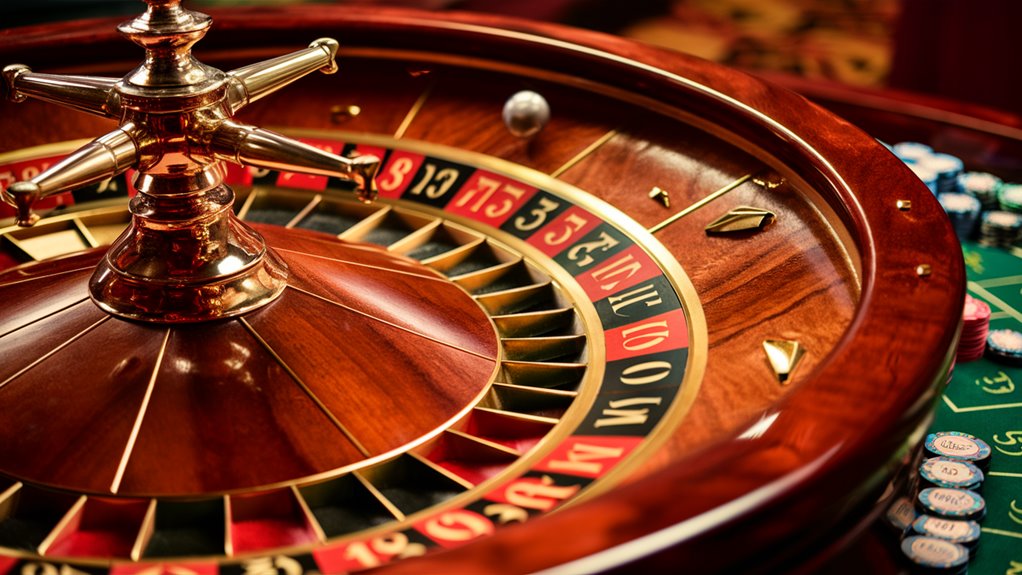Poker Skills: Win Big at the Table

Know Their Moves
Seeing body signs helps tell if others have good cards. Look out for things like shaking hands, odd breaths, and neck pulse bumps. These small acts can show what cards people hold, giving you an edge.
Keep Your Cool
Work on a calm poker look by practicing a lot. Keep your breaths even, handle chips the same way every time, make your moves smooth, and take your time. This makes it hard for others to read you.
Smart Choices
Know your place and use math to make money. Work out pot odds well, think about the value of your moves, and use your spot at the table to get more back. Good players use these ideas to pick the best action every time.
Winning Tips
- Spotting Body Signs: Learn the proven signs. 추천 업체 리스트 확인
- Keeping a Cool Image: Stay unreadable.
- Using Math: Know your odds and strategy.
Use these tested tips at all games. Doing this all the time makes you a player others fear.
See Their Moves
Learn Common Poker Signs: Full Guide
Watch Body and Actions
Poker signs show up in quiet acts and moves during the game.
Top players get great at seeing these hidden signs, which can tell a lot about whether players have strong or weak cards.
Key Signs of Timing
The way they bet tells a lot about their cards. A quick answer often means good cards, while a wait might mean they are unsure.
Watching how players handle their chips can hint at their next move, and seeing who they watch can show they feel weak and want more info.
Spot Body Signs
Look for Body Clues
Body acts can help guess card strength:
- Hand shakes show excitement from good cards
- Breath changes when bluffing
- Covering the mouth or neck shows worry
- Calm sitting often means strong cards
Deep Sign Reading
Understanding signs needs careful thought. Even pros might show false signs, so think about many things:
- How they bet before
- Where they sit
- What they did in past games
- How the game feels
- How many chips they have
This deep think helps you read people better and make top choices at the poker table.
Bluffing’s Mind Tricks
The Mind Side of Bluffing: A Strategy Guide
Get the Mental Edge
Knowing how to bluff is more than just tricks. It changes okay players into great ones.
Good bluffs make up stories that fit what the other players think.
Mind Games in Play
Smart bluffing needs you to think about many mind tricks at once. Key things to think about include:
- How much risk others like to take
- How many chips they play with
- How they feel now
- What they did in the last few hands
Players who just lost might call more with okay cards, while those with many chips might fold even with good cards.
Your Look and Timing
How you seem when you bluff matters a lot.
Showing strong cards often makes bluffs work better later, but if people catch your bluff, play it straight for a while to get their trust back.
Playing Their Thoughts
Smart bluffing uses what people think, not just wild guesses.
Make bluffs that make sense based on:
- Old betting patterns
- What the cards show
- How each player plays
- The feel of the game
This deep know-how of poker minds lets you pull off clever bluffs that work well.
Reading Body Acts at the Table
Know Body Signs in Poker: Full Guide
See Beyond Words at the Table
Reading body acts adds a big layer to your game strategy. Every move, sit change, and breath tells you about other players’ cards.
Good players watch for things like neck tightness and neck pulse, which show stress.
Body Acts to Watch
Look at Breathing
Breath signs tell you how players feel:
- Fast breaths mean excitement
- Short breaths show worry or unsure feelings
- Even, deep breaths often mean they are sure
Hand and Eye Moves
Watching how they move tells you a lot:
- Shaky hands often mean nerves
- Smooth, sure moves show they are calm
- How they handle chips links to card strength
- Looking more or less at others shows how sure they are
Keep Your Cool
Same Acts Always
Act the same all the time:
- Keep time the same for all choices
- Move the same no matter your cards
- Breath the same always
- Make chip moves the same
This steady way makes you hard to read while you learn a lot from watching others, giving you a big edge.
Hide Your Cards Well
Best at Hiding Your Moves: Top Guide

Face Control
Keeping a poker face starts with controlling your face well.
Keep your look cool by relaxing your face and keeping your mouth easy.
Working your jaw carefully stops small face moves that could show your cards.
Handle Breath Well
Even breaths help hide your plays.
Keep your breathing even, whether you have great cards or are bluffing.
Good players keep their breath steady even in tough spots, stopping give-away breath changes.
Move the Same Always
Act the same in every play.
Make your card checks, bet sizes, and chip moves look the same no matter your hand.
Good players keep their betting speed the same in all cases, stopping timing signs that less skilled players show.
Hide Your Plans Well
Use steady move patterns that look normal but hide your real plan.
Practice your chip stacking, card handling, and betting moves a lot.
Top players keep their moves the same, so they don’t show what cards they have or what they plan to do.
Know the Math
Get the Math Right in Poker: Odds, Chances, and Value
Main Poker Math
Poker math helps you make money moves at the table.
Winning needs you to get three key ideas: pot odds, expected odds, and value (EV).
Work Out Pot Odds
Pot odds are the link between what’s in the pot and what you might call.
If you face a $50 bet in a $200 pot, you’re looking at 4-to-1 odds. Match this to the chance of getting what you need.
For a flush draw with nine outs, the chance is 19.6% for the next card – about 4-to-1 against, which makes it an even chance.
Think Ahead with Odds
Implied odds think beyond basic pot odds by adding expected later wins when you might complete a draw.
Being in a good spot and guessing others will pay more if you get your draw ups the math value of calling.
This smart move lets skilled players call even when it seems like the pot odds aren’t great.
Get the Value Right (EV)
Value math works out long-run wins by linking possible outcomes with their chances.
Imagine you have a 20% shot at winning $500 and an 80% chance of losing $50. The value is +$60 ($500 x 0.2 – $50 x 0.8), showing a math move that pays over time.
Use the Math Smart
Good poker play rests on sharp math analysis more than just gut feel.
By always applying these number ideas, players pick the best moves based on clear math gains.
This math base turns poker from luck to a skill game where smart number play wins.
Keep Them Guessing
Make It Hard to Read You in Poker
Set a Steady Style
Same timing and smooth moves build a hard-to-read poker style. Smart players keep their timing the same no matter their cards.
Steady breaths and even moves turn into reflexes, especially in big games.
Trick Them More
Switch up how you play to keep them off track. Move between bold and safe plays to stop them from finding clear patterns.
Time-based signs add layers – taking thought-out pauses in early spots hides good cards and leaves gaps in info.
Get Your Look Right
A calm table look stays key in hiding your cards. Focus on:
- Normal sit control
- Planned hand moves
- Even eye play
- Real poker face
Skip the clear hiding tools like dark glasses or hats to seem more real. You want to look easy-going while using smart random patterns that keep their guesses off.
Win From Your Spot
Play Smart From Any Table Spot: Top Strategy Guide
Use Your Spot Well
Spot play is key in top poker game plans, helping you gain more and lose less by knowing where you sit.
Getting this right gives you a big edge over players who don’t use spot well.
Power from the Late Spot
Late spots (like the dealer button) give you the most control by letting you see what others do first. Good things from this spot include:
- Better chances with okay hands
- More chances to take blinds
- Better control over pot size
- Choices based on full info
Early Spot Needs Care
Playing from an early spot means you pick very good starting hands:
- Stick to the best hands
- Stay out of unsure spots Your Financial Health
- Avoid hard choices after the flop
- Keep pre-flop bets safe
Middle Spot Moves
Playing from the middle spot needs a good balance based on who’s left:
- Less open than late spot
- Not as tight as early spots
- Pick hands based on the table feel
- Play smart based on who’s still in
Make the Most of Your Spot
Knowing your spot well goes beyond just where you sit. It’s about using all you know:
- Read how others play
- Figure pot odds with all info
- Control how the hand goes
- Move smart based on your spot


